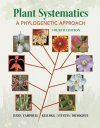About this book
A comprehensive introduction to vascular plant phylogeny, the Fourth Edition of Plant Systematics: A Phylogenetic Approach reflects changes in the circumscription of several families in order to represent monophyletic groups, following the classification of the Angiosperm Phylogeny Group (and recent phylogenetic analyses). Appendices cover botanical nomenclature as well as field and herbarium methodology. The text is copiously illustrated, using in large part the informative analytical drawings developed as part of the Generic Flora of the Southeastern United States project.
Plant Systematics: A Phylogenetic Approach, Fourth Edition is appropriate for any course devoted to the systematics of angiosperms or vascular plants and, secondarily, for local flora courses. The text assumes no prerequisites other than introductory botany or biology.
New to the Fourth Edition:
- Chapter 2, Methods and Principles of Biological Systematics, has been completely rewritten with information on molecular (DNA-based) systematics now fully integrated – a change required by the increasing importance of molecular methods in the construction of phylogenetic hypotheses. The chapter includes updated and expanded coverage of maximum likelihood and Bayesian methods, algorithmic approaches to tree construction, along with parsimony methods, and new sections on mapping characters on trees and dating phylogenies.
- Sections on speciation and species concepts have been rewritten to incorporate extensive recent research on these topics.
- Extensive revisions to 13 families that have undergone significant changes in circumscription have been implemented. Revisions include the breakup of the non-monophyletic "Woodsiaceae", "Portulacaceae", and "Clusiaceae", the segregation of Cleomaceae and Capparaceae from Brassicaceae s.l, Cabombaceae from Nymphaeaceae, Nyssaceae from Cornaceae, and Viscaceae from Santalaceae s.l. In addition, Illiciaceae are included in Schisandraceae, Hydnoraceae and Lactoridaceae in Aristolochiaceae, Centrolepidaceae and Anarthriaceae in Restionaceae, Turneraceae in Passifloraceae, Zannichelliaceae in Potamogetonaceae, and Memecylaceae in Melastomataceae. Several familial clades are for the first time included in the book: Balsaminaceae, Chrysobalanaceae, Fouquieriaceae, Garryaceae, Goodeniaceae, Hypoxidaceae, Musaceae, Phrymaceae, Pittosporaceae, and Thymelaeaceae.
- Higher-level phylogenetic relationships have been updated on the basis of recently published analyses, and these relationships are reflected in the authors' use of names; e.g., within the flowering plants we now recognize Mesangiospermae, Pentapetalae, and the Superrosid and Superasterid clades.
- Updates to all chapters and to nearly all cladograms take into account recent taxonomic methods and hypotheses. In addition, several new cladograms and figures have been added. Since most families have received new phylogenetic study since the previous edition, the summaries of phylogenetic patterns within each of these familial clades and their putative synapomorphies have been updated, including many changes in generic circumscription.
- A greatly expanded online Photo Gallery of Vascular Plants includes over 9,700 photographs illustrating the diagnostic characters and morphological diversity of each of the familial clades covered in Plant Systematics: A Phylogenetic Approach. The photos also include taxa of both temperate and tropical distribution, economically important species, and examples of important anatomical characteristics.
Contents
1. The Science of Plant Systematics
2. Methods and Principles of Biological Systematics
3. Classification and System in Flowering Plants: Historical Background
4. Taxonomic Evidence: Structural and Biochemical Characters
5. The Evolution of Plant Diversity
6. An Overview of Green Plant Phylogeny
7. Lycophytes, Ferns, and Gymnosperms
Appendix 1. Botanical Nomenclature
Appendix 2. Specimen Preparation and Identification
Glossary
Taxonomic Index
Subject Index
Customer Reviews
Biography
Walter S. Judd is a Professor in the Department of Biology at the University of Florida. Christopher S. Campbell is a Professor of Plant Systematics in the School of Biology and Ecology at the University of Maine. Elizabeth A. Kellogg is the E. Desmond Lee Professor in the Department of Biology at the University of Missouri, St. Louis. Peter F. Stevens is a Professor in the Department of Biology at the University of Missouri, St. Louis and Curator of the Missouri Botanical Garden. Michael J. Donoghue is the G. Evelyn Hutchinson Professor in the Department of Ecology and Evolutionary Biology at Yale University.







































